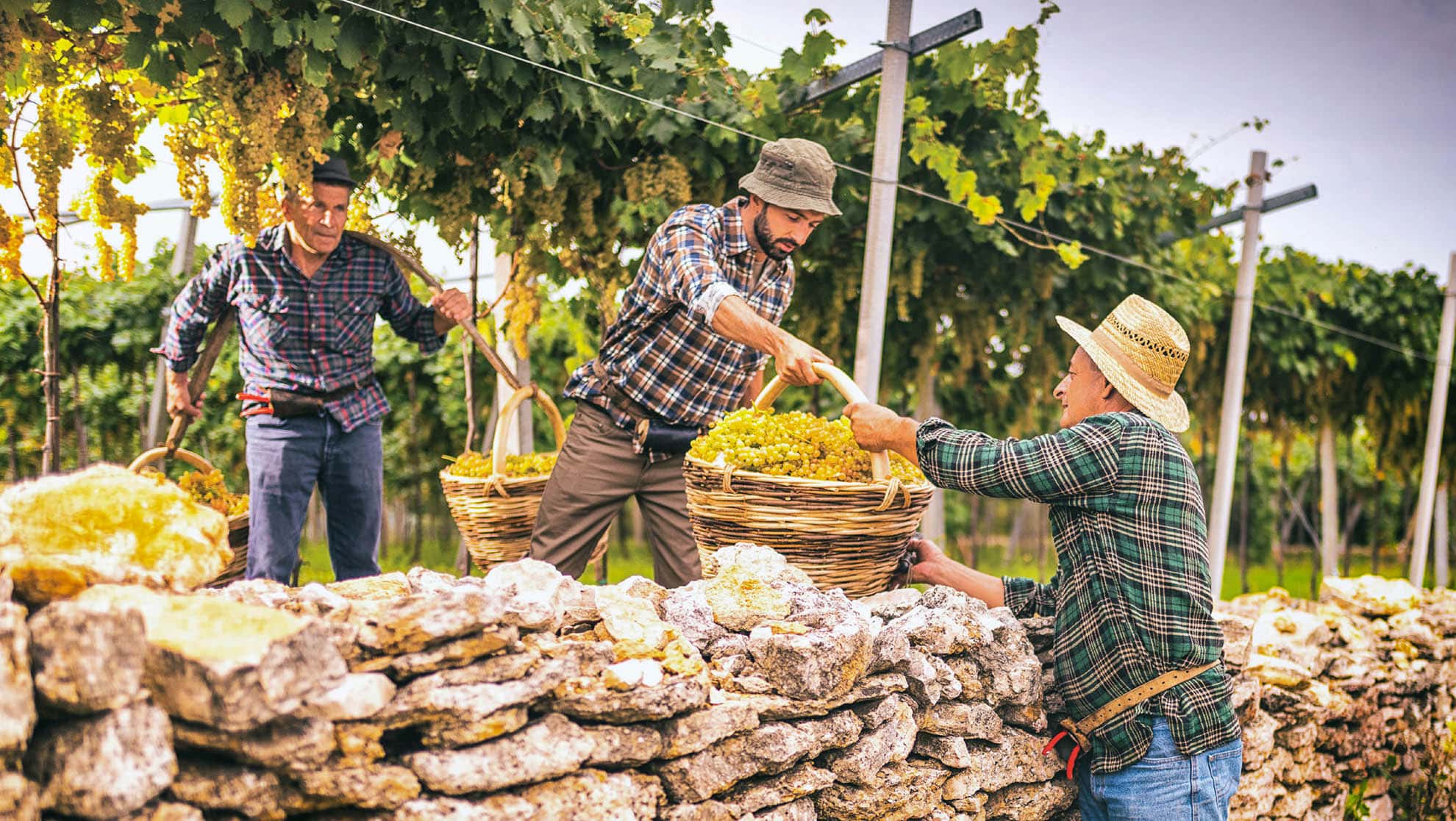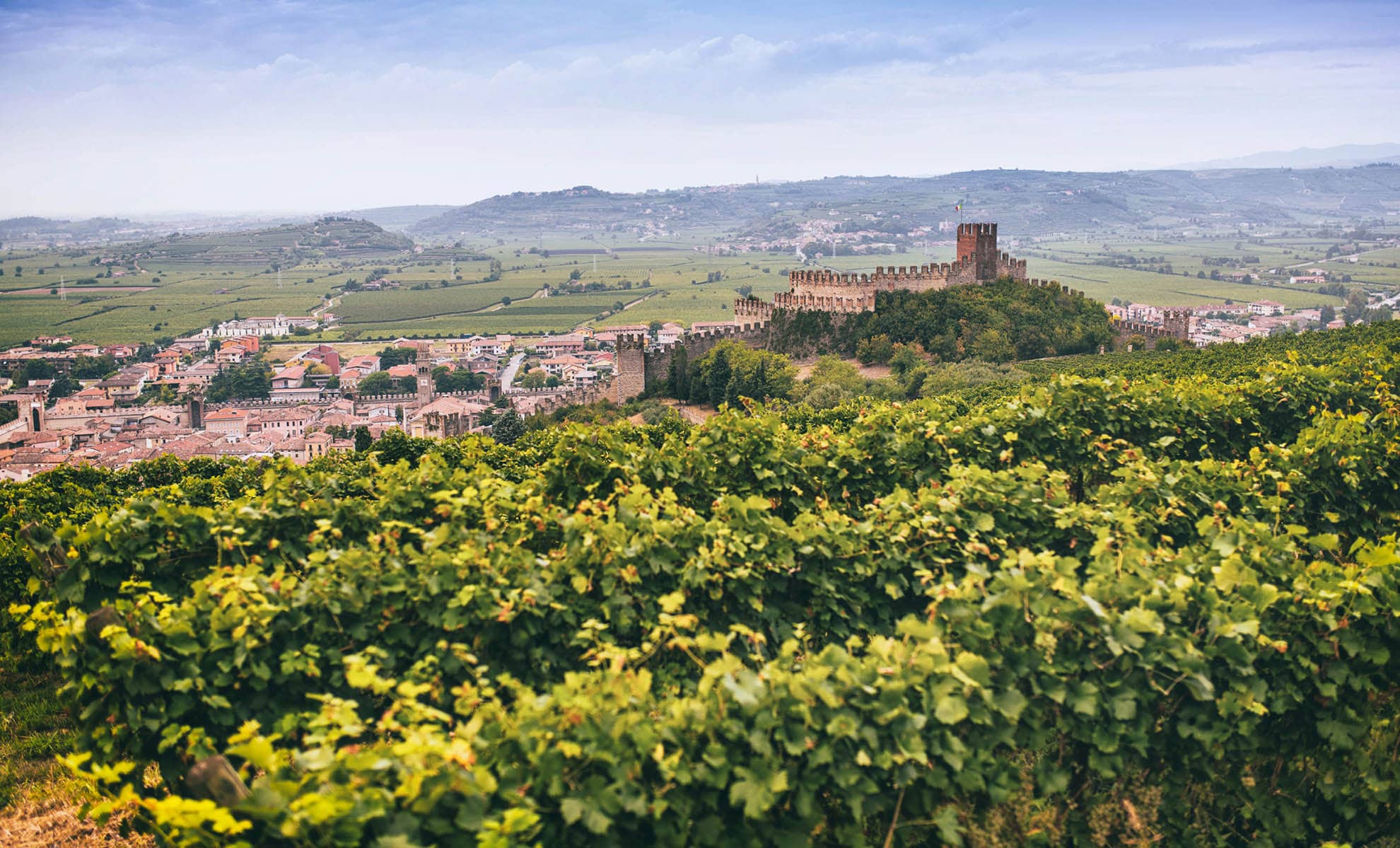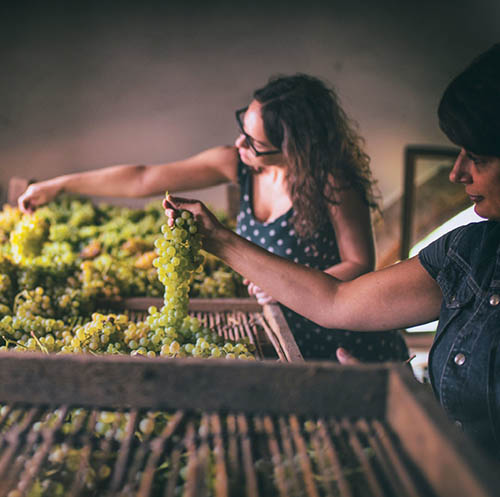

© CONSORZIO TUTELA VINI SOAVE E RECIOTO DI SOAVE
Soave Traditional Vineyards, Italy
Social sustainability and traditional knowledge linked to viticulture
THE SYSTEM
The Soave Traditional Vineyards have provided income to more than 3 000 families over the past 200 years. The grape growers in the Soave area use various approaches to protect the environment, including ecological corridors, marginal areas, namely land that usually has little or no agricultural value, and minor crops such as cherries, olives and peas.
The area features two indigenous grape varieties: Garganega, an ancient and renowned vine, and Trebbiano di Soave, which have been known since Roman times.
Witnessing Italians’ agricultural heritage should not become a once-in-a-lifetime experience, but an ever-lasting occurrence for everyone.
Gaetano Tebaldi Mayor of SoaveThe Soave agricultural system uses traditional methods to grow vines and ensures that income is distributed fairly among the stakeholders in the production chain, including farmers, wine producers and bottlers, even during the most difficult periods. Despite being characterized by small estates, the system has succeeded in remaining competitive, thanks to cooperation and innovation.
TRADITIONAL KNOWLEDGE OF LOCAL COMMUNITIES
The idiosyncratic landscape of the area features vineyards on hilly lands, and ancient trees among the vines and buildings. To prevent soil erosion and limit surface runoff, farmers use contour ploughing, which follows the contours of the hills and slopes and is perfectly adapted to the Soave site.
Typical of the area is the Veronese pergola system, which uses scaffolding and tie rods to support the vine shoots. The system, which is thought to date back to ancient times, suits the production of fine white wines as the slopes are oriented towards the south, which exposes the grapes to long hours of sunshine. The way the slopes are built, however, does not allow for much mechanization. The grape grower must maintain and manage the canopy, and harvest by hand. In addition to the pergola, farmers build dry-stone walls to mark the roads, and embankments to create terraces on the slopes.
Soave has held a variety of festivals and events to celebrate agriculture for generations. The Festa dell’Uva (Grape Festival), held on the third weekend of September, is the most prestigious. It started in 1929 and was the first of its kind in Italy. Today, there is an annual competition to determine the best grapes; a local association hangs the grapes under the medieval gate to make a particular sweet wine. These productive activities emphasize the importance of preserving agricultural traditions as a key element for cultural and social cohesion in Italian local communities.

Farmers harvesting grapes in a Soave Traditional Vineyard
© CONSORZIO TUTELA VINI SOAVE E RECIOTO DI SOAVE
ACHIEVEMENTS
Since the designation of the Soave Traditional Vineyards as a GIAHS site in 2018:
- The Veneto Region has announced plans to allocate more financial resources to the management of the terraced areas.
- The Soave Wine Consortium has requested that the Veneto Region include the terraced areas of the Soave area in the regional list of historical and exceptional vineyards.
- A phytosanitary commission has been set up, where farmers meet weekly to coordinate actions regarding less invasive and more conservative pest and disease treatments.
The Soave Traditional Vineyards are a site of great value, requiring huge investment for maintenance and protection. The GIAHS recognition has prompted a generational change in the management of farms and wine companies, stimulated investment by government and local authorities, and triggered a virtuous circle where winemakers become the drivers for conservation and sustainable development.

Soave Traditional Vineyards
© CONSORZIO TUTELA VINI SOAVE E RECIOTO DI SOAVE
It is a great, great satisfaction that, since its designation as a GIAHS site, Soave is now among the most important agricultural and wine systems in the world for its ability to maintain centuries-old traditions, despite innovations that characterize a modern, efficient and income-generating production system. Soave becomes an example for all humanity, and for this we can only be happy.
Sandro Gini President of the Soave Wine Protection Consortium and producer
Female farmers examining freshly harvested grapes
© CONSORZIO TUTELA VINI SOAVE E RECIOTO DI SOAVE

